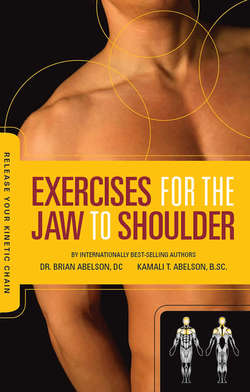Читать книгу Exercises for the Jaw to Shoulder - Release Your Kinetic Chain - Dr. Brian James Abelson DC. - Страница 26
Your Neck’s Kinetic Chain
ОглавлениеYour neck is a remarkable piece of engineering. It must be strong enough to support the weight of a small bowling ball, yet remain flexible enough to bend, flex, extend, and rotate with precision.
Think of your neck as a mast on a sailboat, surrounded by the rigging lines which control and stabilize the mast.
In your case, these rigging lines are made up of the muscles, tendons, ligaments, and connective tissues of your neck. These ‘lines’ work remarkably well as long as you maintain a fine balance of strength and flexibility.
Your neck’s rigging (the lines of soft tissue that connect into your neck) make up part of your neck’s kinetic chain. It is incredibly interesting to see just how far these ‘lines’ run, and just where many of the structures that connect into your neck insert or originate.
Your neck consists of the top seven vertebrae of your spine, the muscles and soft tissues that support and move your neck, and the blood vessels and nerves that pass from your brain to the rest of your body. A normal, healthy neck should be strong, flexible, balanced, and provide great motor control.
An understanding of this anatomical organization will give you a much better picture of your neck’s kinetic chain. Consider just two of the neck’s soft tissue structures:
Levator Scapula Muscle: This posterior neck muscle connects into the transverse processes of the top four vertebrae of your neck. This muscle also attaches into the top inside corner of your shoulder blade (scapula).
Trapezius Muscle: This large triangular muscle inserts right at the base of your skull (occiput). However, if you follow this muscle, you will see that it also runs all the way from your mid/lower back (T12 vertebra), attaches to your shoulder blade (scapula), and extends over your shoulder to the lateral one-third of your collar bone (clavicle).
Now, consider how restrictions in any part of these structures can detrimentally affect the function of your neck. By seeing these connections, we start to understand how restrictions in distant parts of your body can affect the function and pain felt by your neck! Now let’s take a look at these examples from a kinetic chain perspective:
Since the Levator Scapulae muscle connects directly into your shoulder blade, any restrictions that affects scapular rotation will have an immediate effect on your neck. For example, restrictions in the Serratus Anterior (which runs from your ribs to the lateral aspect of your shoulder blade) affects the function of the Levator Scapulae muscle by causing abnormal scapular rotation. This in turn increases tension in the Levator Scapulae muscle. This type of abnormal scapular motion is known as “scapular dyskinesis”. Scapular dyskinesis is often a cause of chronic neck and shoulder pain.
The Trapezius (as an adductor) and the Serratus Anterior (as an abductor) help stabilize the shoulder. The trapezius muscle also connects into the shoulder blade (acromion of the scapula).
Again, any abnormal motion or tension in muscles that attach to the shoulder blade will cause tension in the trapezius muscle.
Each muscle in the neck is affected not only by its adjacent structures but also by the total symmetry of all the other soft tissue structures that surround the neck.
An understanding of these key kinetic chain relationships is fundamental to injury resolution, otherwise even the best treatments and exercises will only provide symptomatic relief instead of addressing the root cause of your problems.
